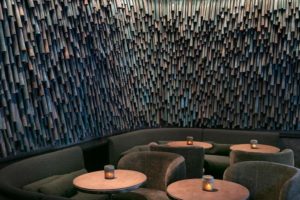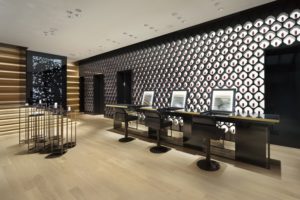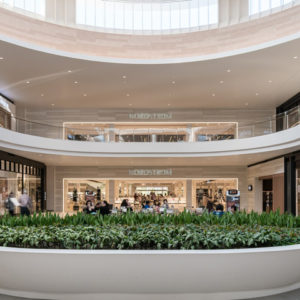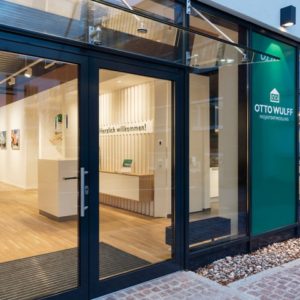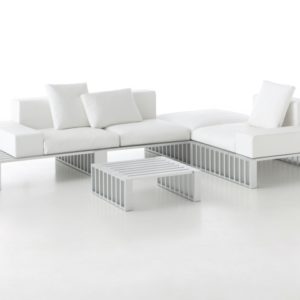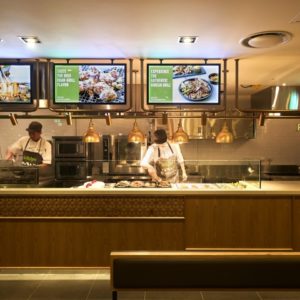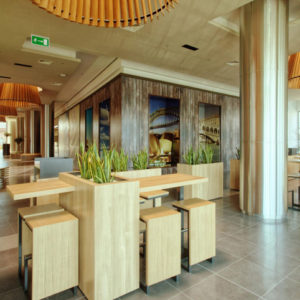
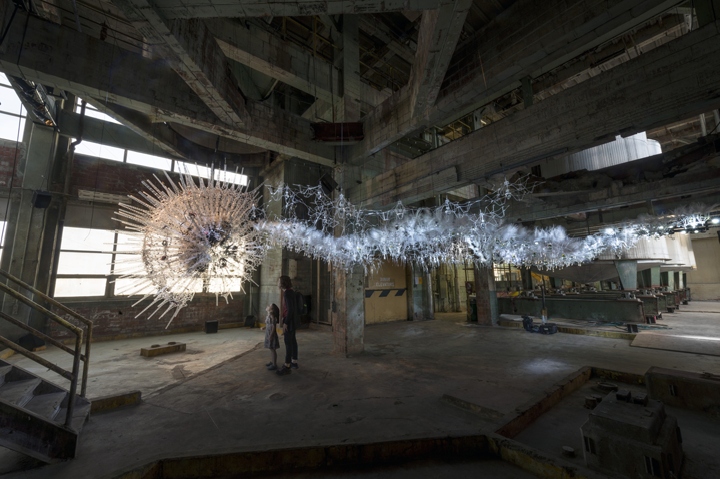

‘Astrocyte’ is a living piece of architecture that could easily be mistaken for a piece of science fiction. Engaging with the senses for an immersive experience, artist and architect Philip Beesley’s aerial structure combines chemistry, artificial intelligence, and a responsive soundscape. ‘Astrocyte’, translates from Greek to the literal meaning of star and cell, appropriate for such a complex structure that can react with the viewers’ movements with patterns of light, vibrations and surround sound.
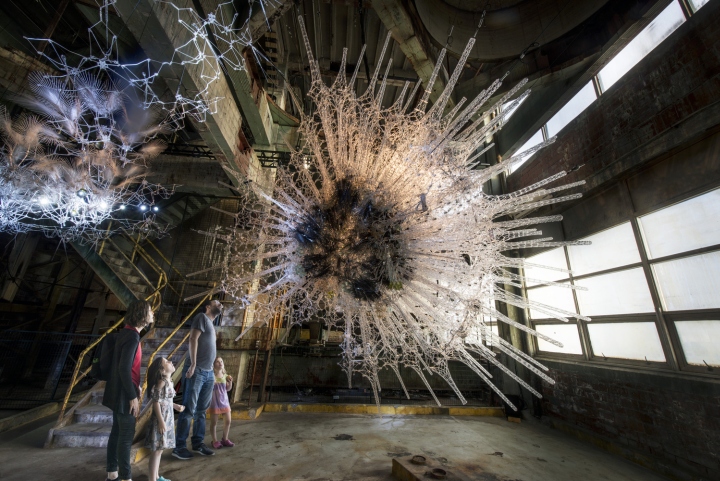
Toronto’s Expo for Design, Innovation and Technology last October featured Astrocyte as a living installation not dissimilar to a system of nerves and the signals passing through whilst the glasswork holding a combination of oils, chemicals and other solutions forms a similar structure of an organic skin. The complex Astrocyte is comprised of 300,000 components that combines mylar fronds, therapy-formed acrylic, 3D printed lights, custom glasswork, and sensors.

The synthetic biology system has the potential to self-repair and alters space through the kinetic mechanisms that integrate structure and motion – two opposing characteristics. Together they connect with humans much like how nature does in the intermeshed structure with varying forces. At the heart of the structure, an impressive star-shaped cell lights up and becomes the centerpiece of the design.
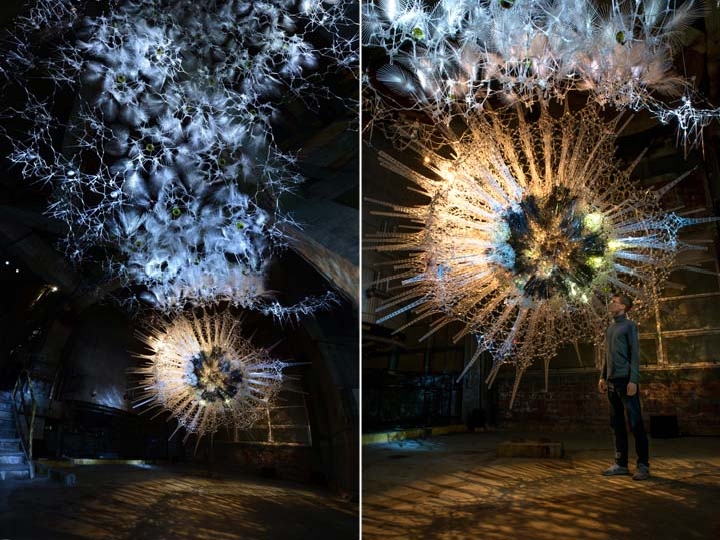
In collaboration with Philip Beesley’s Living Architecture Systems group at the University of Waterloo, Astrocyte poses the question of if buildings could think and care? Philip Beesley told Farmboy Fine Arts, “The work is robust, yet delicate in nature, and this seems to encourage different ways of acting… Observing people interacting with these spaces is quite striking because extraordinarily gentle and respectful responses tend to happen.
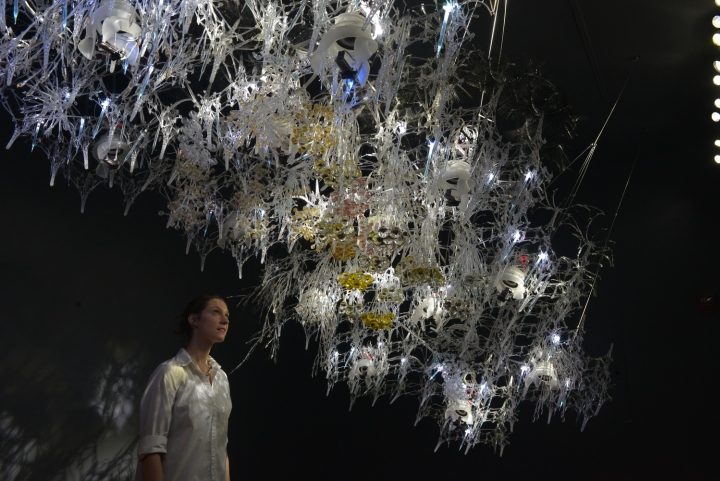
Have we caused someone to experience a different and perhaps healthier form of interaction?” The multidisciplinary group has been researching into how far the idea of interconnected environments can be taken in a six-year research plan from experimental prototypes to public scale biophilic installations. Astrocyte and many of their other projects hold the potential for a new outlook as to how environments can adapt and renew to suit the inhabitants.
Design: Living Architecture Systems
Photography: Philip Beesley
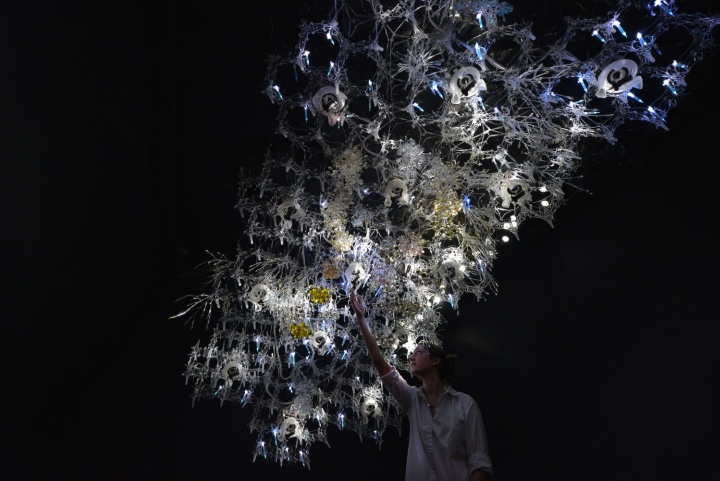
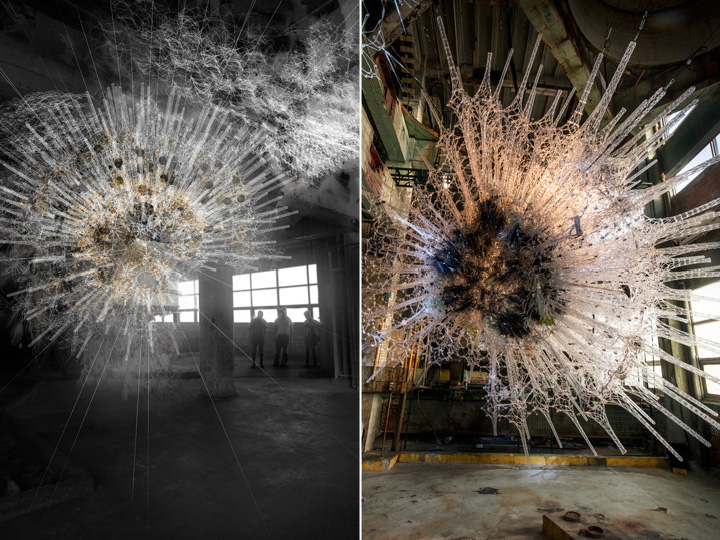






Add to collection
